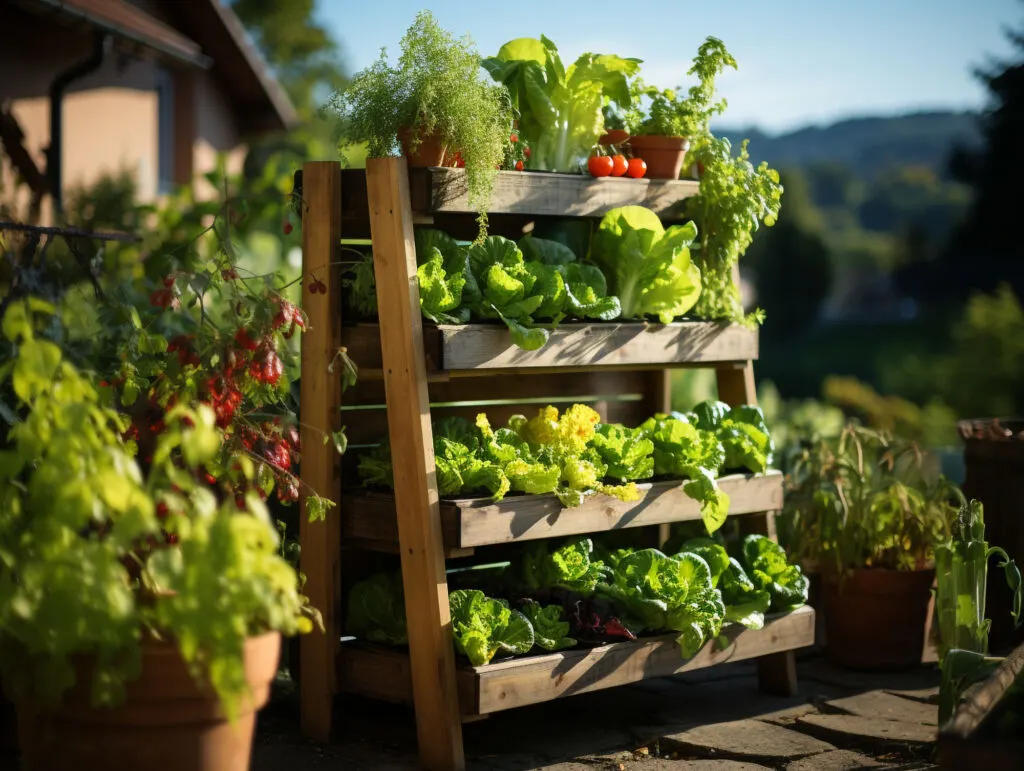Creating a vertical vegetable garden using pallet planters is an excellent DIY project for small spaces. It’s cost-effective, sustainable, and a great way to grow fresh produce. Here’s a step-by-step guide:
Materials Needed
- Wooden pallet (heat-treated, marked with “HT”)
- Sandpaper or electric sander
- Non-toxic wood sealant (optional, for durability)
- Landscape fabric or garden plastic
- Staple gun and staples
- Potting soil
- Vegetable seeds or seedlings
- Screws and mounting hardware (if wall-mounting)
- Gardening gloves
Step-by-Step Guide
1. Choose the Right Pallet
- Select a clean, undamaged wooden pallet labeled “HT” (heat-treated). Avoid pallets with “MB” (methyl bromide), as they may contain harmful chemicals.
2. Clean and Prepare the Pallet
- Sand down rough edges and splinters.
- If desired, seal the wood with a non-toxic, food-safe sealant to protect against moisture and prolong its life.
3. Create Planting Pockets
- Attach landscape fabric or garden plastic to the back and bottom of the pallet to hold soil in place.
- Use a staple gun to secure the fabric tightly, ensuring it can support the weight of the soil.
4. Fill the Pallet with Soil
- Stand the pallet upright and fill the planting pockets with high-quality potting soil.
- Tamp the soil gently to reduce settling once the plants are added.
5. Plant Your Vegetables
- Choose vegetables suited to shallow soil, such as:
- Leafy greens: Lettuce, spinach, kale
- Herbs: Basil, parsley, cilantro
- Small veggies: Radishes, baby carrots, strawberries
- Plant seeds or seedlings in the soil, ensuring they’re spaced appropriately.
6. Position Your Pallet Garden
- Against a Wall: Secure the pallet with screws and mounting brackets for stability.
- Freestanding: Lean the pallet against a sturdy surface or build a support structure.
- Ensure the garden receives 6–8 hours of sunlight daily.
7. Water and Maintain
- Water regularly but avoid overwatering, as pallets may not drain quickly.
- Fertilize with organic compost or natural fertilizers to promote growth.
- Watch for pests and manage them using organic methods like neem oil or companion planting.
Optional Enhancements
- Irrigation System: Add a drip irrigation system for consistent watering.
- Decorative Touches: Paint the pallet with non-toxic colors to match your garden’s theme.
- Labeling: Use chalk paint or small signs to label each plant pocket.
Benefits of a Pallet Planter Vertical Garden
- Space-Saving: Ideal for balconies, patios, or small yards.
- Recyclable: Gives old pallets a new life.
- Customizable: Adjust size, shape, and plant varieties to suit your needs.
With this simple DIY project, you’ll have a thriving vertical vegetable garden that adds beauty and productivity to your space! 🌱
